Passover begins this year at sundown, on Friday, April 6th. Jewish families around the world will be sitting down to the Passover Seder, the traditional meal to celebrate the exodus from Egypt and slavery. The food on the Seder Plate is traditional and symbolic. It includes:
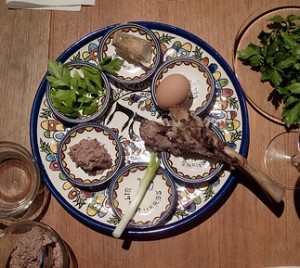 a lamb shank, representing the Paschal lamb sacrificed before leaving the land of slavery,
a lamb shank, representing the Paschal lamb sacrificed before leaving the land of slavery,- a hard boiled egg, symbolizing the festival sacrifice offered in the ancient Temple in Jerusalem,
- bitter herbs, usually horseradish, symbolizing the bitterness of slavery,
- charoset, a ground blend of fruit and nuts symbolizing the mortar used by the Jewish slaves on Egyptian buildings,
- karpas, a vegetable, often parsley, dipped in salt water, to symbolize the tears of slavery.
These traditional elements of the Seder Plate have gone mostly unchanged for millennia. The one element that has changed the most in modern times is the wine on the table. For anybody over the age of twenty, the Seder always included sweet, thick, kosher wine made from Concord grapes, usually from Mogen David or Manischewitz. Today, though, fine kosher wines from traditional European grapes (Vitis vinifera) including chardonnay, sauvignon blanc, cabernet sauvignon, cabernet franc, merlot, pinot noir, carmenere, and more, are available from every major wine producing region in the world. A small panel of wine lovers tasted some of the widely available Kosher wines for Palate Press.
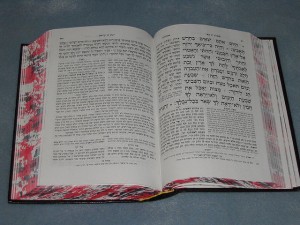
Some Kosher wines are mevushal, or pasteurized. Once done by boiling the wine, now it is more often done at lower temperatures or even with flash pasteurization. A mevushal wine remains Kosher even when handled by a non-Jew, including a waiter or sommelier. The boiling of wine is what led to thick, low-alcohol Kosher wines from our childhood. More modern mevushal wine is, when done well, often indistinguishable from non-mevushal wine.
Many believe The Last Supper was a Passover Seder, though biblical scholars do not all agree. Evidence is found in the Gospels of Mark (“And on the first day of Unleavened Bread, when they sacrificed the passover lamb, his disciples said to him, ‘Where will you have us go and prepare for you to eat the passover? [Mark 14:12]), Luke (“And when the hour came, he sat at table, and the apostles with him. And he said to them, ‘I have earnestly desired to eat this passover with you before I suffer’ [Luke 22:14-15]), and Matthew (“Now the first day of the feast of unleavened bread the disciples came to Jesus, saying unto him, ‘Where wilt thou that we prepare for thee to eat the passover?'” [Matthew 26:17]). John, on the other hand, placed it the day before Passover (“Then the Jewish leaders took Jesus from Caiaphas to the palace of the Roman governor. By now it was early morning, and to avoid ceremonial uncleanness they did not enter the palace, because they wanted to be able to eat the Passover.” [John 18:28]), a position more consistent with the Jewish law against a trial on the day of a festival. The historical debate will continue, though the ecclesiastical debate may have been settled with the pronouncement of Pope Benedict XVI who, in 2007, declared “It was on the eve of his Passion that Jesus together with his disciples celebrated this meal with its multiple meanings.” With this in mind, Kosher wines may find a new welcome on the table at Easter Sunday as well the Passover Seder.
[end_columns]
The panel tasted a dozen different wines from around the world. One was from Italy, one from Spain, one from France, three from the United States (1 Napa, 1 Oregon and 1 Washington), and six were from Israel (5 Galilee and 1 Shomron). Seven were mevushal and five were not. Two were white, the rest red. All the wines reviewed are Kosher for Passover. There are many more Kosher wines available around the world, including wines from the finest vineyards in Bordeaux and other French regions, as well as wines from the United States, Australia, and South America.
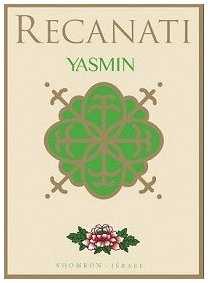
The first wine of the evening was the white Recanati Yasmin 2010, a blend of Sauvignon Blanc (50%), Emerald Riesling (25%) and French Colombard (25%). It is a mevushal wine from Shomron, Israel. Colombard is a very widely grown blending grape, and is used extensively in the making of Cognac and Armagnac. It is still one of the wines permitted in white Bordeaux wines. Emerald Riesling is a cross of Riesling and Muscadelle, created by Dr. Harold Olmo, of the UC Davis, and bred for warm weather climates. It had an interesting smoky flavor, with soft tropical fruit and citrus. From the traditional Passover meal, it would pair well with matzoh-ball soup.
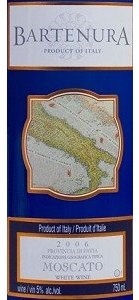
The other white was the 2011 Bartenura Moscato, a lightly fizzy (frizzante) sweet mevushal wine from Provincia di Pavia, in Italy. Initial flavors were very sweet, sugar and honey, settling to add melon and mint on the mid-palate. The sweetness could pair with sweet charoset, but perhaps the best use would be a contrast with gefilte fish, a quenelle of ground whitefish made with sugar or black pepper, depending upon whether the recipe (and usually the ancestors), come from north or south of the Gefilte Fish Line. The entire panel enjoyed the wine, and “I don’t usually like sweet wines, but I like this” was uttered by more than one person. Easter diners would enjoy this with Hot Cross Buns.

Pacifica Pinot Noir, Evan’s Collection, 2010, was the first red wine of the night, and is non-mevushal. Obviously an Oregon Pinot Noir, nearly translucent garnet colored, this was a light, high-acid, food friendly wine. It will pair nicely with everything from dark meat poultry to lamb. It is also a good choice if you want to put just one wine on the table to pair from soup to brisket. It got positive, though not rave, reviews from the entire panel. For Easter dinner this will match an Easter ham, but that sort of kills the whole “keeping Kosher in honor of the Last Supper” idea. 
The first Israeli wine of the evening was 2009 Appellation, Cabernet Franc, from Carmel Winery in Galilee. The first wine to get mixed reviews, every man on the panel liked it, while every woman gave it a thumbs-down. The wine had a dusty mouth-feel, and the classic tobacco leaf aromas of Cab Franc. It is non-mevushal, but is vegan. This wine would pair very nicely with brisket, the mainstay of a traditional Passover meal. It is also a great choice for a vegetarian/vegan holiday meal, Passover or Easter.
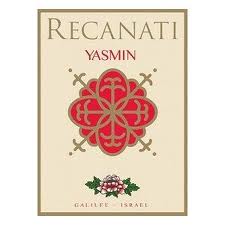
The second Recanati Yasmin of the night, the red wine from 2010, was a blend of 60% Merlot and 40% Cabernet Sauvignon. It is a mevushal wine from Galilee. It smelled and tasted of candied red fruits. It was lacking in both tannins and acids, and was not a crowd favorite.
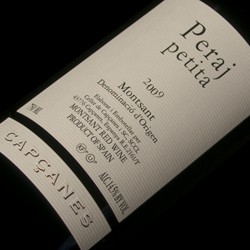 The next wine, 2009 Celler de Capçanes Peraj Petita, from Spain, was one of the most popular wines of the evening. It showed bright, fruity flavors of strawberry and cherry, and gentle but well-balanced tannins and acids. An excellent food wine, this is another soup-to-brisket option, though it might be a bit too much for matzoh ball soup. This non-mevushal wine is a blend of Garnacha (Grenache), Samso (Cinsault), and Ull de Llebre (Tempranillo). This is the second wine of the night that would pair well next to an Easter ham.
The next wine, 2009 Celler de Capçanes Peraj Petita, from Spain, was one of the most popular wines of the evening. It showed bright, fruity flavors of strawberry and cherry, and gentle but well-balanced tannins and acids. An excellent food wine, this is another soup-to-brisket option, though it might be a bit too much for matzoh ball soup. This non-mevushal wine is a blend of Garnacha (Grenache), Samso (Cinsault), and Ull de Llebre (Tempranillo). This is the second wine of the night that would pair well next to an Easter ham.
Barkan Classic Cabernet Sauvignon, 2010, was the first of three Cabernets Sauvignons in the tasting. A moderately priced mevushal wine from Galilee, it had varietally-correct blackcurrant flavors with background hints of vanilla, adding a bit of mint on the mid-palate. It will pair well with brisket.
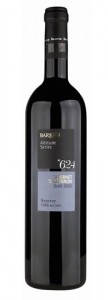
The second Cabernet was also from Barkan, the +624 from its Altitude series. This limited production wine (approximately 1,000 cases) was one of the stars of the evening. A big mouthful of wine with a good balance between silky tannins and clean acids, it was filled with coffee and chocolate flavors. Cherries were the primary fruit, with some black fruit background. Mocha lingered a long time on the finish. It will more than do justice to brisket, but will pair better with lamb. It is also a great choice for traditional Easter lamb.
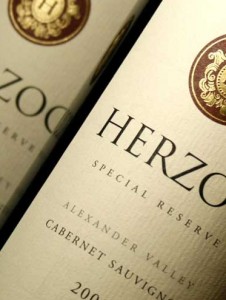
The penultimate wine of the evening was the Herzog Special Reserve Cabernet Sauvignon, 2008, a non-mevushal wine. The primary flavor was blackberry, with a pronounced cedar background supported by nutmeg and mint. Several people commented in the spice in the wine. It was popular, but not unanimous. Acid and tannins were well-balanced. Drink with lamb, for Passover or Easter.

The last wine of the night was the Binyamina Reserve Shiraz 2009, a mevushal blend of 98% Shiraz (Syrah) and 2% Viognier. Fruits were very full and rich, but not overpowering to the point of jammy. The lead fruit was elderberry, with blackberry a distant second. Black pepper appeared on the mid-palate and lingered through the finish. This panel-popular wine is the best brisket pairing of the night.
Two wines were flawed and are not reviewed.
Seder plate photo Photo by Robert Couse-Baker licensed under Creative Commons.
Talmud photo courtesy of BecomingJewish.org licensed under Creative Commons.

 David Honig, the Publisher, looked at the thousands of quality wine blogs and realized there was a ready-made staff for the best wine magazine in the world. David has been running 2 Days per Bottle for two years now, and started up The 89 Project, focusing on that most unfortunate of scores, “89.” He is a self-educated oenophile, and defers to the tremendous experience and wisdom of the amazing staff at PALATE PRESS: The Online Wine Magazine.
David Honig, the Publisher, looked at the thousands of quality wine blogs and realized there was a ready-made staff for the best wine magazine in the world. David has been running 2 Days per Bottle for two years now, and started up The 89 Project, focusing on that most unfortunate of scores, “89.” He is a self-educated oenophile, and defers to the tremendous experience and wisdom of the amazing staff at PALATE PRESS: The Online Wine Magazine.
